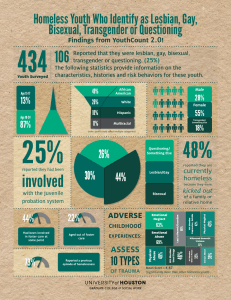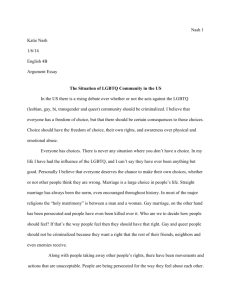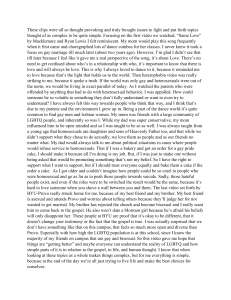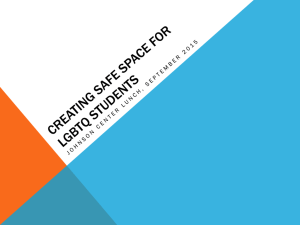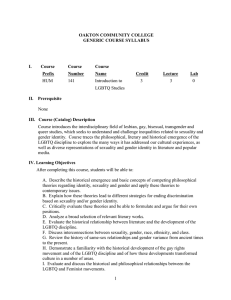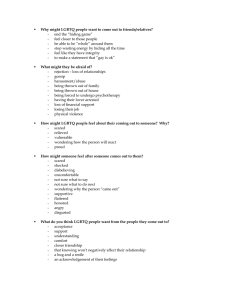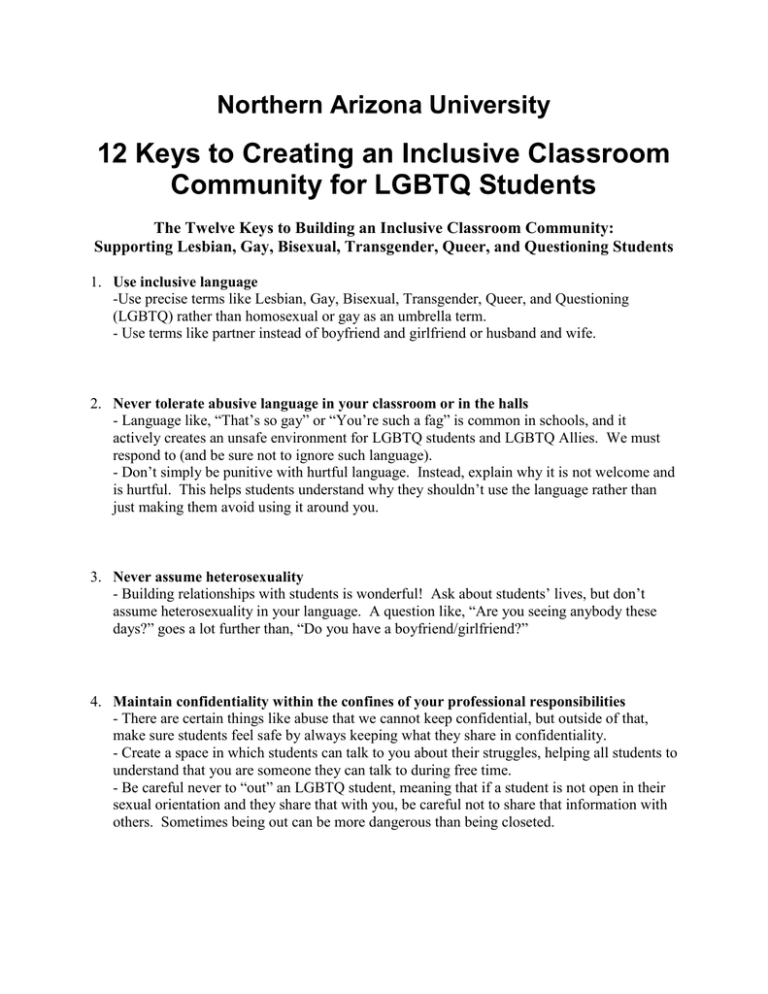
Northern Arizona University
12 Keys to Creating an Inclusive Classroom
Community for LGBTQ Students
The Twelve Keys to Building an Inclusive Classroom Community:
Supporting Lesbian, Gay, Bisexual, Transgender, Queer, and Questioning Students
1. Use inclusive language
-Use precise terms like Lesbian, Gay, Bisexual, Transgender, Queer, and Questioning
(LGBTQ) rather than homosexual or gay as an umbrella term.
- Use terms like partner instead of boyfriend and girlfriend or husband and wife.
2. Never tolerate abusive language in your classroom or in the halls
- Language like, “That’s so gay” or “You’re such a fag” is common in schools, and it
actively creates an unsafe environment for LGBTQ students and LGBTQ Allies. We must
respond to (and be sure not to ignore such language).
- Don’t simply be punitive with hurtful language. Instead, explain why it is not welcome and
is hurtful. This helps students understand why they shouldn’t use the language rather than
just making them avoid using it around you.
3. Never assume heterosexuality
- Building relationships with students is wonderful! Ask about students’ lives, but don’t
assume heterosexuality in your language. A question like, “Are you seeing anybody these
days?” goes a lot further than, “Do you have a boyfriend/girlfriend?”
4. Maintain confidentiality within the confines of your professional responsibilities
- There are certain things like abuse that we cannot keep confidential, but outside of that,
make sure students feel safe by always keeping what they share in confidentiality.
- Create a space in which students can talk to you about their struggles, helping all students to
understand that you are someone they can talk to during free time.
- Be careful never to “out” an LGBTQ student, meaning that if a student is not open in their
sexual orientation and they share that with you, be careful not to share that information with
others. Sometimes being out can be more dangerous than being closeted.
5. Keep an eye out for bullying and act to stop it
- It’s tough to know the best way to respond to bullying. Sometimes it means interrupting
bullying as it happens. Sometimes it means talking to the bullies or the bullied afterward.
- In responding to bullying, be careful to not make the target out to be the weak one in the
situation, as that can make bullying worse in the long run.
6. Respect the needs and wishes of Lesbian, Gay, and Bisexual students
- Support them in their decisions and their needs, helping them to make safe choices that will
help them be happy and fully realized as a young person.
- Questions like, “Are you sure?” “Could this be a phase?” are not helpful.
7. Respect the needs and wishes of Transgender students
- Respect the names students wish to be called and the pronouns they prefer. When unsure,
ask the individual one on one with empathy and respect.
- Respect the clothing choices students make, supporting them as they figure out how they
want to perform their gender.
-Be aware of the usage of a class roster system (PeopleSoft for example) for attendance
purposes or visibly displayed to the class, the name listed on the roster may not be the
student’s preferred name and could out the student to classmates. Transgender students often
do not have the money to legally change their name.
8. Encourage respectful disagreement on issues of sexual identity
- Dialogue and discussion inside and outside the classroom are helpful and healthy so long as
it is respectful. Don’t shut down conversations about sexual orientation and gender identity,
but make sure to facilitate the conversation down inclusive roads and correct misconceptions.
9. Don’t ask people to speak for an entire group. Minority students often report either feeling
invisible in class, or sticking out like a sore thumb as the token minority. This experience is
heightened when they are addressed as spokespeople for their whole group, and can have
implications on performance (Lord & Saenz, 1985).
10. Examine your curriculum. Are certain perspectives systematically not represented in your
course materials (e.g., a course on family focusing only on traditional families, or a course on
public policy ignoring race issues)? Neglecting some issues implies a value judgment
(Hooks 1994), which can alienate certain groups of students. Please refer to the Ways to
Incorporate LGBT subject matters into class curriculum document.
Document adapted from Global Ascension Productions.


